What Does It Mean To Be ‘A Mona Lisa’?
Article Content
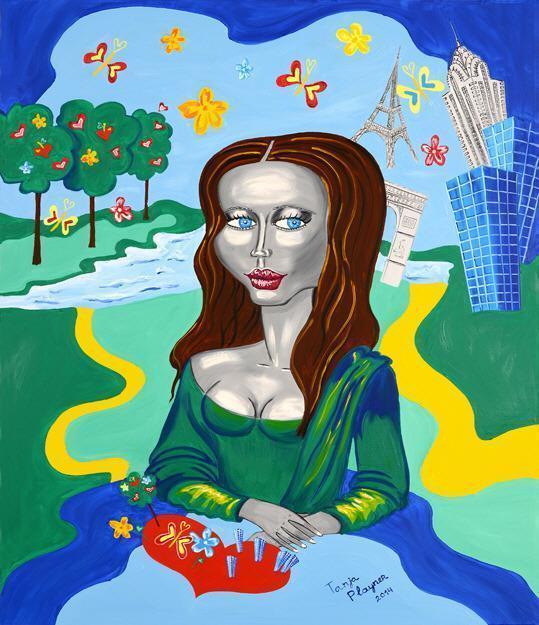
In the age that Andy Warhol foresaw, where we all can “be world-famous for 15 minutes,” the most famous work of art is becoming a meme for our time.
Google or Pinterest-search Mona Lisa or her name in other languages (i.e. La Gioconda, etc.) and the search results demonstrate how deep and far she runs through every culture’s conscious.
So what does it mean to be and to be called “a Mona Lisa”?
I bring this up because:
- After all these centuries a second layer was uncovered under the top layer of the painting we know as the Mona Lisa. This shattered myths and confirmed that Mona Lisa is in fact a portrait of Lisa.
- I’ve been noticing more than usual Mona Lisa fan art popping up.
- Pop culture is finally out of the woods with the Da Vinci Code period.
- We’re living in the time of meme-madness, and Mona Lisa has found its way into our cultural reference language.
Interpretations of Mona Lisa
It’s one of the most recognizable paintings in the world, so could the Mona Lisa be a description for a female whose image we’re obsessed with? Is to be a Mona Lisa the epitome of famous and recognizable? Or is it another way of describing someone as a “cold and lonely lovely work of art“? I’ve found over the course of my life that the words frequently used in interpretations and analyses of the Mona Lisa are “mystical” and “mysterious” and “cypher.” A large part of this has to do with the subject of the painting’s smile and gender.
The Smile: Mona Lisa
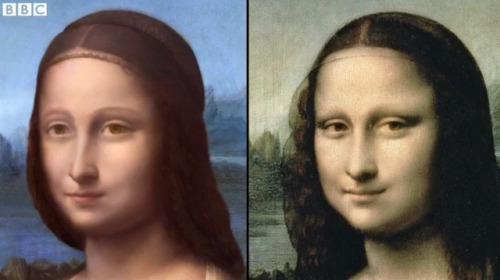
Matt Maldre shared with me that 83% of Lisa demonstrates happy emotions to a computer (University of Amsterdam, 2005). This confirms that the top layer painting we know as the Mona Lisa is smiling, but the painting underneath seems a little shy and apprehensive with her smile. Since the discovery of the layer (and layers) by French Scientist Pascal Cotte the idea of the painting being an evolution of Lisa over time, and Da Vinci making adjustments as she matured might be spot on. It looks like Lisa lost her timidity and it shows in her face, which has been the top layer of the painting.
La Gioconda: Lisa, The Happy One
What a coincidence that Lisa del Giocondo means Lisa Jovial One (a.k.a. happy one). As we know now for sure, the subject of the painting, is Lisa del Giocondo. Her husband Francesco del Giocondo (a wealthy Florentine silk merchant) commissioned Da Vinci to paint her portrait. The Italian name for the painting actually has always been La Gioconda, from the word “jocund” (“happy” or “jovial”) which translates to
“the jocund one”, a pun on the feminine form of Lisa’s married name, “Giocondo”. (Martin Kemp, 2006)
The Gender Riddle: Mona Lisa
Leonardo Da Vinci began painting Lisa’s portrait in 1503. The Mona Lisa’s existence first came to public consciousness in 1517. Understandably it took a long time to complete considering this was back in the 16th century. However, there has long been speculation that the painting became Da Vinci’s self-portrait somewhere down the line. Androgynous has been used to describe the look of the top layer of the painting by people in the art world, and even Dan Brown’s Robert Langdon thought it was the secret to why Lisa’s smile captivated people:
“Mona Lisa” is an anagram of “Amon” and “Isis,” if you write “Isis” in the manner of some (unreferenced) ancient pictogram that roughly translates to “L’isa” in Latin text. Thus PROVING that (quoting from p. 121) “… not only does the face of Mona Lisa look androgynous, but her name is an anagram of the divine union of male and female. And that, my friends, is Da Vinci’s little secret, and the reason for Mona Lisa’s knowing smile.” Source: The Da Vinci Code, Dan Brown (2006)
If you want to dig a little deeper with this theory of Amon/Isis/Isa/Lisa etc., it morphs into this idea that the real mystery is that the Mona Lisa is Jesus in disguise (Martin Kemp).
Anything is possible. In 2015 we learned a lot about the how we all have elements of both male and female genders. 2015 was also the year society became aware of and started to accept transgenders.
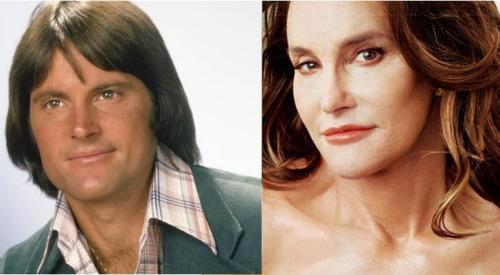
With the tools we have today, anyone can change themselves to look anyway they wish. You can make yourself your own work of art. Beauty is in the eye of the beholder isn’t it?
Mona Lisa: Fame and Public Property
The Mona Lisa is considered one, if not the most famous and recognizable works of art. It’s dangerous to use absolutes, but fame has a reputation for absolutely attracting danger. There have been many attempts to steal the Mona Lisa from the Musée du Louvre, the most famous attempt was a success (Source: Vanity Fair). Don’t worry, it was retrieved, but did you know that the image of Mona Lisa is in the public domain? Since Leonardo Da Vinci died more than 70 years ago, copyright indicates that you can use a work freely. The painting is not for sale, but you could make money off of your use of its image. Fame has a similar effect in our popular culture.
You know this story…it’s like a ‘choose your own adventure game.’ Here’s how the fame story can go:
Someone becomes famous and becomes public property in the eyes of the public. Afterwards, the following are possible to come with fame:
The famous individual:
1.) becomes imitated by fans, but even by peers who want to achieve fame and fortune based on the formula that has worked for the famous, influential, cultural icon.
then, and/or
2.) get’s taken advantage of by people who do or want to, live or make money off them.
then
3.) goes nuts.
and/or
4.) tries to escape the prison of fame.
or
5.) get’s into trouble.
or
6.) is never seen or heard from again.
or
7.) learns how to handle fame, protect them self and live life to the fullest.
or
8.) dies tragically.
Fame can be a lonely existence, and can become a curse depending on the person.
Mona Lisa in Mashup and Meme Culture
Funny that the Mona Lisa, now free to use in the public domain, has been used more than you might guess in popular culture. Famous Andy Warhol used the image of the painting in one of his own paintings in 1978.
The Mona Lisa has become a meme of sorts in our meme-loving culture. Check out Meme Generator to find all the uses of Mona Lisa in internet meme. Memes are a shorthand for conveying what we mean by using references that are most of the time known in popular culture. In our very “over sharing” culture of social media, memes are a way of showing cleverness or superior humor. Memes help us make connections with ideas and connect with people. Memes also can be used for teasing.
As I discussed above, we can change how we look in almost any way these days. Not limited to physical anatomy or appearance, we can use photo editing tools to change ourselves or insert ourselves into another image to generate a meme. Memes have a nature of going viral, and it’s one way of trying to get wide attention, but memes are also used to critique, lampoon, or put people on a pedestal.
People have this bad habit of projecting onto others. With the Mona Lisa, people see themselves or others reflected in her face. Frighteningly, her eyes seem to follow you if you don’t break eye contact with the painting as you move. We project onto famous people our desires and our insecurities, which is part of why fame can be a heaven and/or a hell for the famous. All eyes are on you. For the most obsessed-over famous people it can be 24/7. We can all achieve 15 minutes of fame these days, but it’s a wonder why considering the tragedy that tends to historically come to the famous.
Pop art, as Andy Warhol coined the phrase and made famous, is a style that permeates this era very much. Being visual is very much a currency used frequently to replace textual explanation. You see mashups of old and new, and it’s great to see something from another time made popular again.
As I’ve written about before, culture has a way of repeating itself. What’s popular is actually a cycle of fixation and imitating elements from a period from the past and paying homage to that period by bringing it back à la façon (in fashion). Mona Lisa never seems to have gone out of fashion, just look at today (see above tweet again) with how she’s used to lampoon Hillary Clinton and paint her as cold and dishonest; or to have fun with the origins of a character like Princess Leia from the returned to popularity Star Wars franchise; or to explain the fall of a pop star like Britney Spears. There’s even a song about the famous painting. The song was originally sung by Nat King Cole, and won the Academy Award for ‘Original Song’ in 1950.
Mona Lisa, Mona Lisa, men have named you. You're so like the lady with the mystic smile. Is it only 'cause you're lonely they have blamed you? For that Mona Lisa strangeness in your smile?Do you smile to tempt a lover, Mona Lisa? Or is this your way to hide a broken heart? Many dreams have been brought to your doorstep They just lie there and they die there Are you warm, are you real, Mona Lisa? Or just a cold and lonely lovely work of art?Do you smile to tempt a lover, Mona Lisa? Or is this your way to hide a broken heart? Many dreams have been brought to your doorstep They just lie there and they die there Are you warm, are you real, Mona Lisa? Or just a cold and lonely lovely work of art?Mona Lisa, Mona Lisa Lyrics/Song written by Ray Evans and Jay Livingston (1950) © PEERMUSIC PUBLISHING, SONY/ATV MUSIC PUBLISHING LLC
The long obsessed-over legendary music icon Elvis Presely even did a home-recording of the Mona Lisa song because it connected with him. Talk about someone for whom fame hurt.

Artists have used Mona Lisa in song and all areas of art to express about themselves or others. In my opinion the most recent near-tragedy with a famous person has to have been Britney Spears. The interesting story of her fall from grace was actually chronicled in an unreleased album to be called “Original Doll.” Hunter Schwarz wrote about the lost album and the strange mystery its shrouded in. The only song that was not lost is called Mona Lisa. It talks about a fall, and how Mona Lisa has been cloned. The Mona Lisa is considered one of the most reproduced works of art, and Original Doll suggests that Britney Spears was seeing herself being replaced by copycats as she was trying to break out of the mold she was introduced in to the public. Her record company blocked her attempts to release an album with full artistic control, the rest of the details illustrate a very controlling and destructive industry. Music isn’t the only industry, did you know that because Marilyn Monroe (one of the most remember Hollywood stars yet) was seen as “uncontrollable” so the studio she was under contract got some successors ready to parody and copy her trademark image, style, and delivery so 20th Century Fox could keep racking in millions with only with doppelgangers they would fashion (Sheree North, etc.) Well when you produce counterfeits to do the movies your original star knew were poor projects (The Pink Tights), it usually doesn’t work out.
Britney Spears didn’t invent the pop star, but her arrival in the late 1990’s marked the revival of the bubblegum pop that had been trying to come back since the 1960s. She is referred to as the princess of pop, her accomplishments are not something to balk at, she’s had enough trouble trying to be taken seriously…she is a cautionary tale among many, but an inspiring story of survival in the end.
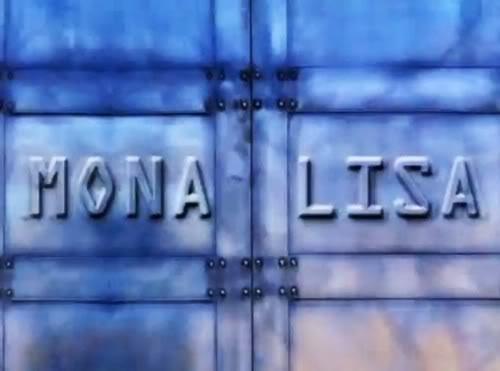
Crazy Extra Connection Between Britney Spears and Mona Lisa: Britney fought for the song “Do Somethin'” to be released as an extra single from her 2004 Greatest Hits Album. Not only was the concept for the single’s music video her own, she was the stylist, choreographed, and co-directed the music video as well. The craziest thing of all was that Britney released the “Do Somethin'” music video under the name Mona Lisa and not Britney Spears. Why? Here’s what she said when asked:
“I kinda think she’s like my alter ego whenever I feel like being mean or possibly like bustin’ people around to get stuff right … It’s kinda easier to be called ‘Mona Lisa’ instead of Britney” (Source: Wilkes, Neil (2005-01-25). “Britney: Mona Lisa is my alter ego”. Digital Spy. Hachette Filipacchi UK.
It makes sense now why Britney Spears has switched her hair to dark brown locks in the past. Channeling her Mona Lisa alter ego, who doesn’t have to be the small voiced and controlled blonde venus pop star.

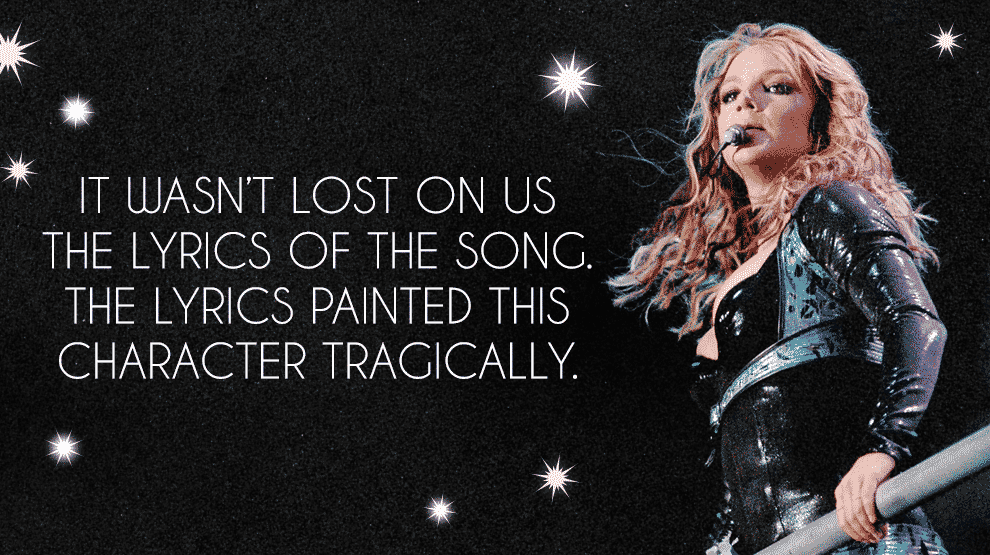
So What Does Being a Mona Lisa Mean Then?!
Is it like, are you a Betty or a Veronica, or what?
I think Mona Lisa stands for a masterpiece, in two ways.
When said admiringly, it means to be someone who is untouchably appealing or inspiring. On the flip side— if said sarcastically, it means to be someone who acts like they are, but in reality are not—essentially a fake.
The myths and enigma of Mona Lisa are gone, thanks to technology the spell is broken and we can see that there was more to her than met the eye (as is true with any one you meet). The layers of portraits show an evolution of a young bride. Now the top layer brings a smile to one’s face, a sense of hope because we know everything turned out alright for our Mona Lisa.
Recommended Reading
A Guide to Leonardo and His Art in The Da Vinci Code – Questions and Answers
Stealing Mona Lisa (Hobler, Vanity Fair, 2009)
Star Wars meets Mona Lisa – Matthew Maldre
